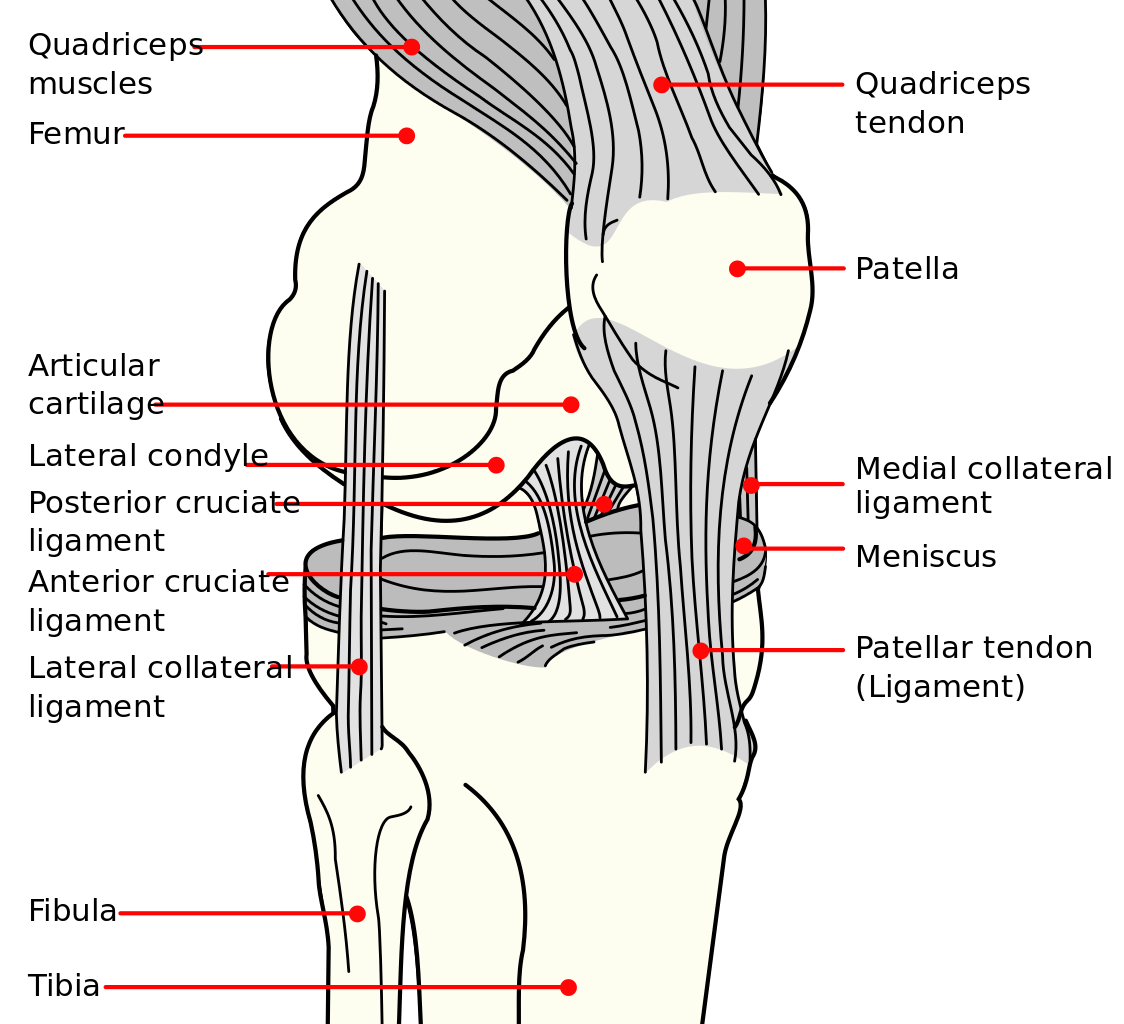
Erasmus+
“This project has been funded with support from the European Commission. This publication reflects the views only of the author, and the Commission cannot be held responsible for any use which may be made of the information contained therein”
Posterior Cruciate Ligament (PCL) injuries in soccer – Prevention Strategies
Upon completion of this module the reader will be able to:
- Understand basic anatomy and functional anatomy for the knee complex.
- Understand the Posterior cruciate ligament (PCL) Injury epidemiology
- Understand the mechanisms for the PCL injuries.
- Determine common risk factors that can lead to the PCL injuries.
- Incorporate exercises in order apply a prevention strategy for the PCL injuries.
Review the «Anatomy and Functional of the knee joint» topic and the «Injury prevention strategies» topic first. Read the description of the “Posterior Cruciate Ligament injuries in soccer – Prevention strategies” and the corresponding presentation and then follow the proposed videos for some ideas of “PCL injury prevention exercises”. End the session with the “Bibliography and the additional learning materials” and assess your understanding with the “Posterior Cruciate Ligaments injuries in soccer” quiz.
The PCL is approximately twice as strong and twice as thick as the anterior cruciate ligament (ACL). This ligament originates from the antero-lateral aspect of medial femoral condyle in the area of intercondylar notch; it origin is much more anterior than that of ACL The PCL is an important restraint to the posterior tibial translation relative to the femur. In addition, the PCL acts as a secondary restraint to resist varus, valgus, and external rotation moments about the knee.
Figure: An illustration of knee joint

Τhe proposed preventive strategies for knee injuries include four phases and they propose specific preventive exercises :
Phase I : Muscular conditioning to restore dysfunctional movement patterns that can impede performance
1a. Inhibition: Inhibit through foam rolling the over-activate muscles: gastrocnemius & soleus, adductors, Tensor fasciae latae & Iliotibial band, and the short head of the biceps femoris.
1b.Muscle lengthen: Specific lengthening exercises with static or neuromuscular stretches for gastrocnemius & soleus, adductors, Tensor fasciae latae & IT-band, and the short head of the biceps femoris
Phase II: Muscular performance: Modifying strength and conditioning movements
Specific activation exercises through strengthening exercises or positional stabilization exercises for the anterior and posterior tibialis, gluteus medius, and gluteus maximus. Core strength.
Phase III: Functional exercise: Building efficient movement patterns
Starting with proper athletic position, always warm up before playing, perform different Squats and Walking Lunges. Do balance, agility-changing direction and jumping and landing exercises.
Posterior Cruciate Ligament (PCL) injuries in soccer – Prevention strategies
PCL injuries are less common than ACL injuries.
PCL injuries epidemiology
The reported incidence of PCL injuries shows a great variation and is reported to be responsible for 1–44 % of all acute knee injuries, partly because individuals often sustain an injury of the PCL along with other structures of the knee. Amongst various sports, Football (soccer) and skiing activities are the most important sports activities leading to a PCL injury. In soccer, the goalkeeper is most exposed to this type of injury. Other physical activity (like dancing and some team activities) are also an important activity that leads such injury (Schulz et al.2003).
Mechanisms of injury
Traditionally, PCL injury is a result of a dashboard injury in traffic accidents, where individuals fall on the flexed knee with the foot plantar flexed. In sports, the typical mechanism of isolated PCL injury is a direct blow to the anterior tibia or a fall onto the knee with the foot in a plantarflexed position. Rotational forces around the knee may increase injury risk and they can cause other ligamentous injuries.
Posterior Cruciate Ligament (PCL) injuries prevention exercises based on previous phases:
Phase I : Muscular conditioning to restore dysfunctional movement patterns that can impede performance
Phase ΙI : Muscular performance – Modifying strength and conditioning movements patterns
Phase III: Functional exercise – Building efficient movement patterns
Bibliography and the additional learning materials
- First try to increase your joint flexibility using stretches
- Strengthen you muscles, especially the quadriceps
- Perform balance exercises
- Try to improve your technique in landings and changes in direction
- Always exercise in a pain-free range of motion. Exercises or parts of exercise that lead to pain should be avoided.
- Edson CJ, Fanelli GC, Beck JD. Postoperative rehabilitation of the posterior cruciate ligament. Sports Med Arthrosc Rev. 2010;18(4):275–279.
- Margheritini F, Rihn J, Musahl V, Mariani PP, Harner C. Posterior cruciate ligament injuries in the athlete: an anatomical, biomechanical and clinical review. Sports Med. 2002;32(6):393–408.
- Schulz MS, Russe K, Weiler A, Eichhorn HJ, Strobel MJ. Epidemiology of posterior cruciate ligament injuries. Arch Orthop Trauma Surg. 2003;123(4):186–191
- Shelbourne KD, Davis TJ, Patel DV. The natural history of acute, isolated, nonoperatively treated posterior cruciate ligament injuries. A prospective study. Am J Sports Med. 1999;27(3):276–283
[ays_quiz id=’22’]
Erasmus+
“This project has been funded with support from the European Commission. This publication reflects the views only of the author, and the Commission cannot be held responsible for any use which may be made of the information contained therein.”
